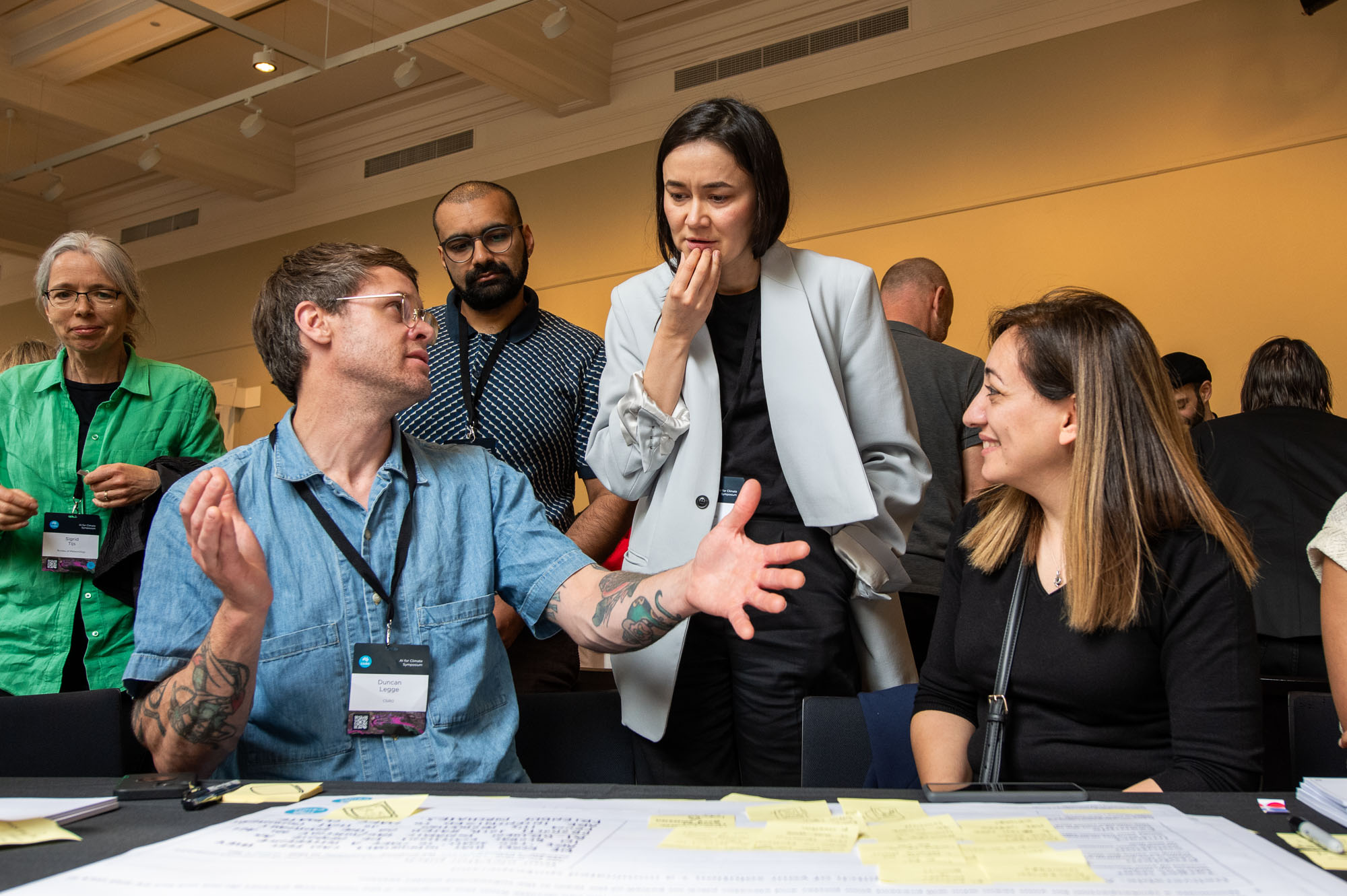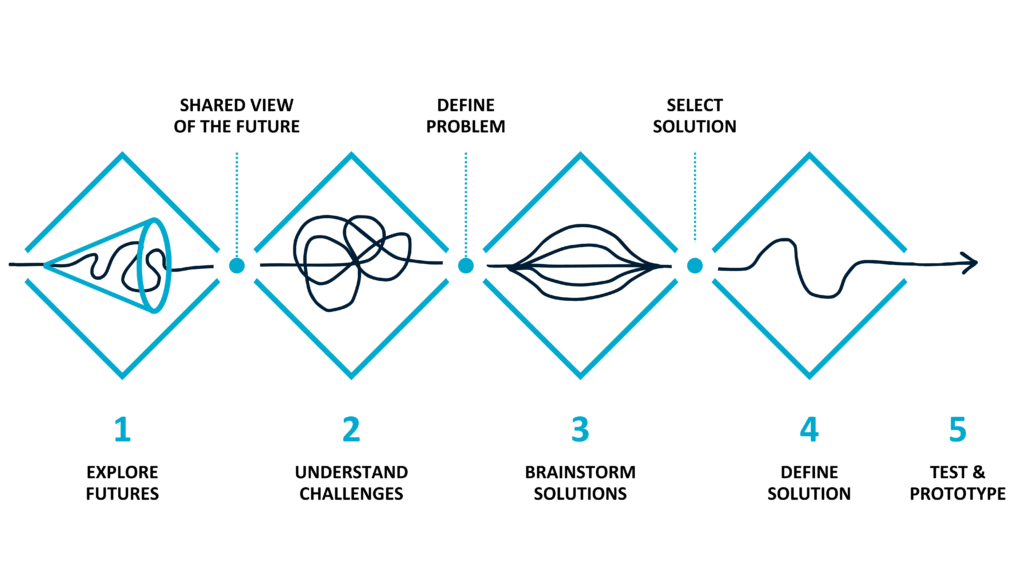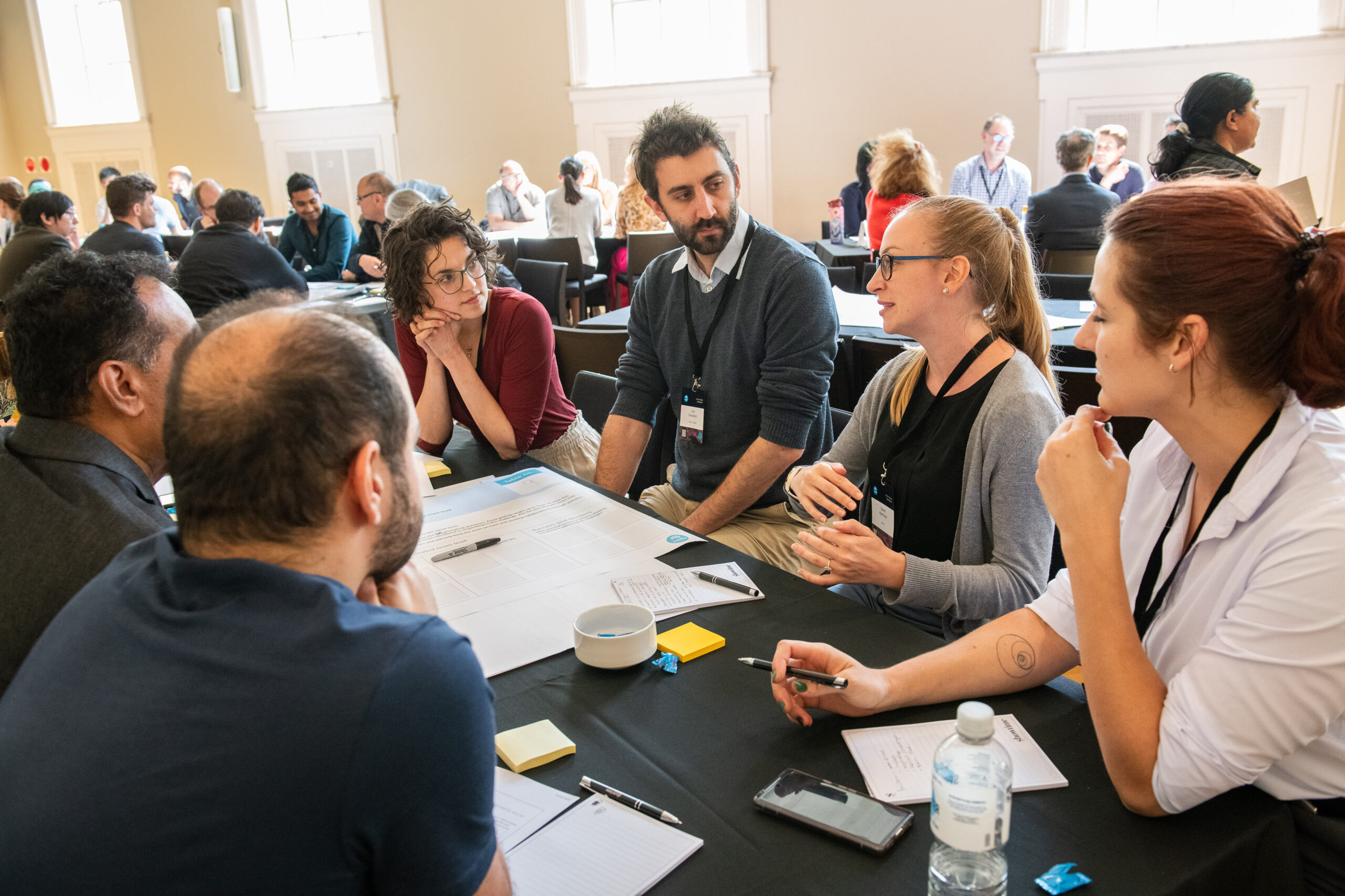Climate Solutions Design Sprint
The Climate Solutions Design Sprint was designed to encourage innovative thinking around potential AI solutions to some of our greatest climate challenges.
Split across the two days of the AI for Climate Symposium, cross-disciplinary teams came together to ideate, develop and pitch a novel AI-driven climate solution.

The challenges we tackled
Teams selected on one of the following climate challenges to focus on:
- Innovations for household energy efficiency: Considering electric vehicle use and household carbon footprints, how might individual households and consumers proactively respond to the changing climate?
- Reducing emissions in healthcare supply chains: While this challenge isn’t exclusive to healthcare, how might the healthcare sector better measure, monitor and reduce its Scope 3 emissions across its often globally distributed supply chains?
- More granular methane monitoring: How we might measure and monitor global methane emissions more precisely with available data science capabilities?
- Human bias with AI for climate: How might we use AI across a range of climate mitigation and adaptation contexts where people are prone to cognitive biases and shortcuts that prevent optimal decisions?
The process we followed
Teams worked through a series of activities that were designed to rapidly and collaboratively identify and pitch a potential AI-driven solution to their chosen climate challenge.

This began by exploring the problem space and understanding the factors contributing to that challenge.
Next, teams brainstormed potential solutions to their chosen climate challenge. These solutions leveraged AI along with other capabilities to ensure the successful and responsible design and deployment of the solution.
The design sprint concluded with a pitching session where teams developed a “Gaddie-style” pitch for their solution.

Meet the design sprint team





